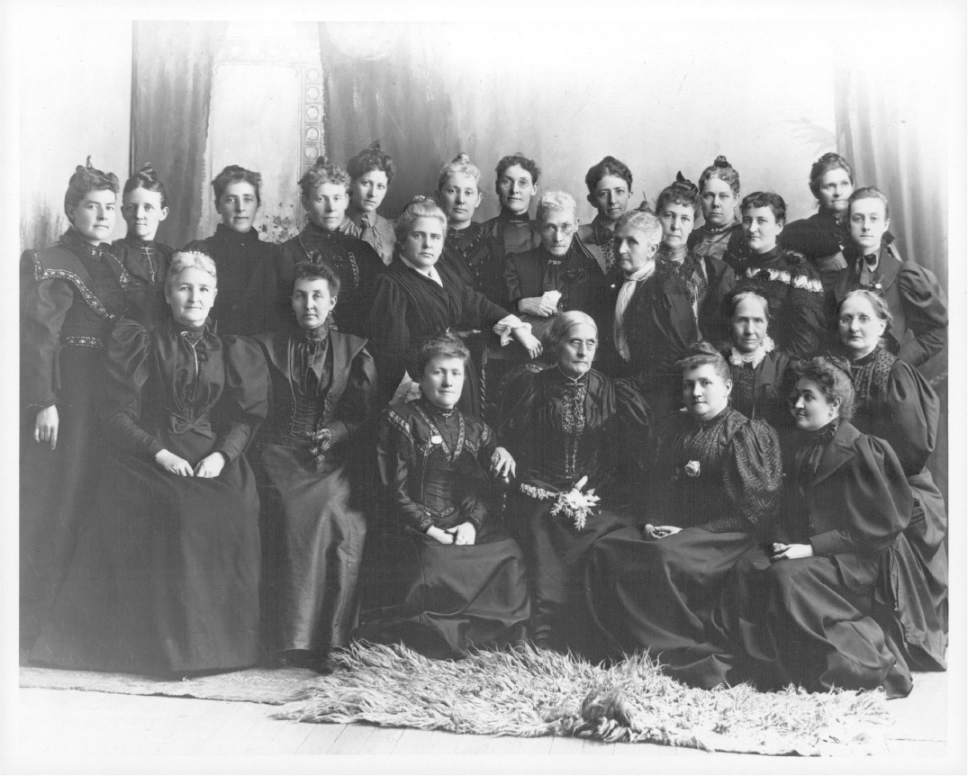
Mormon women fought for suffrage, and this is their story.
Several bills, in Washington D.C., were created to stop the Mormons from living in polygamy. Many national government leaders clearly wanted to rid themselves of the Mormons and their strange ways, particularly in the area of polygamy. It was believed women were being forced against their will, and therefore, weak and helpless in their marriages.
By 1870, the Mormon women were hearing that some of these bills, against them, were passing; they knew they needed to get together to take a stand. Sarah Kimball (the same sister who formed the original sewing circle in Nauvoo) said that sisters would be “unworthy of the names we bear and of the blood in our veins, should we longer remain silent.” Eliza R. Snow said it was “high time” to “rise up in the dignity of our calling and speak for ourselves. We are not inferior to the Ladies of the World, and we do not want to appear so.”
Shortly after, three thousand women gathered in the old tabernacle on Temple Square to organize. Many newspapers across the US were in attendance to report this remarkable gathering. The New York Herald said that “in logic and in rhetoric the so-called degraded ladies of Mormondom are quite equal to the woman’s rights women of the East.”
This meeting was called the Great Indignation Meeting, held on January 13, 1870. A blizzard caused a white-out but didn’t deter the women, traveling from all over the territory, from packing themselves into the Old Tabernacle on Temple Square. You can read for yourself the “fighting words” of these courageous women.
Thus began the Mormon Women suffrage movement.
There were two suffrage camps: The suffragists, led by Elizabeth Cady Stanton, were mothers who wanted a better life for women as they raised their families. When Sarah and Emmeline Wells approached them, they wanted nothing to do with Mormon polygamists. Mrs. Stanton was invited to speak in the Tabernacle and began insulting the degraded Mormon women for accepting their bigotted husbands. The women booed her off the stage and never invited her back.
Still determined to have a voice in the voting world, the Mormon women approached Susan B. Anthony, a suffragette, who was a radical thinker not simply wanting the vote for women, but also demanding equal rights for women. She had no problem accepting the Mormon women as allies. And the Mormon women were happy to accept Ms. Anthony as a friend who could help them get what they wanted.
What the Mormon women wanted was the right to make their own decisions, which at that time was to live in polygamy, which they saw as a Celestial law. They wanted better conditions for their families and the right to work with enough pay to support their families when their husbands were off on missions. The only way to achieve this was to have the right to vote, then to run for office, and then to create bills of their own that would change their lives for the better.
Susan B. Anthony visited Utah in 1871, and many times after, creating a very long connection with the Mormon women. A petition of 13,000 names of Utah women, pledging support to suffrage, was handed over to the Eastern women. Emmeline B. Wells and Zina Young Williams and several others were asked multiple times to speak at the National Woman Suffrage Association in Washington, D.C. In the 1880s, leaders of the Relief Society and Young Ladies Mutual Improvement Association were asked to become charter members of the International Council of Women and National Council of Women. The latter group elected Belle Spafford to serve as its president in 1968, while concurrently serving as President of the General Relief Society.
On November 5, 1895, Utah, after accepting 24,801 signatures, gave women the right to vote. Wyoming was the first state to pass the right for women to vote, but Utah had elections first, enabling Utah women to be the first to actually vote. It wasn’t long before women began running for office and becoming heavily involved in Utah politics.
(In the photo, you can see Susan B. Anthony sitting in the middle with glasses on.)
(some of this information was gathered from Women of Covenant)